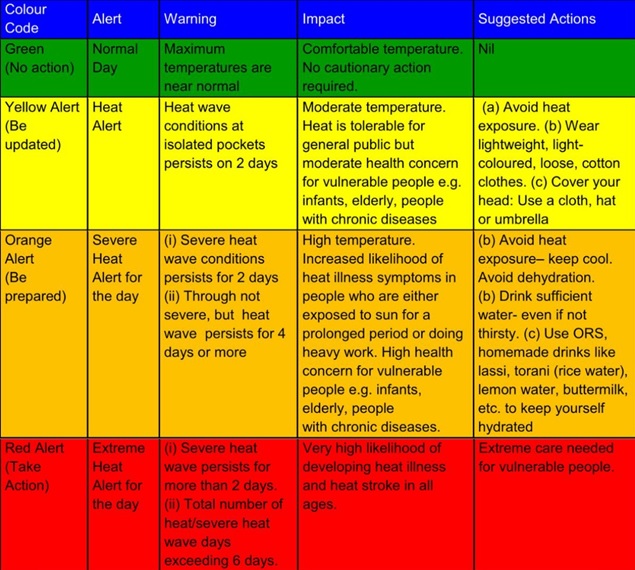The Indian Meteorological Department (IMD) issued a red alert for heatwaves in Delhi, Punjab, Haryana, and most parts of Western Rajasthan.
|
Region |
Temperature range to declare as a heatwave |
|
Plains |
Maximum temperature of at least 40°C or more |
|
Hilly regions |
Maximum temperature of at least 30°C or more. |
|
Coastal region |
Maximum temperature departure of 37°C or more from normal. |
|
For a heatwave to be declared, these conditions must be met in at least two weather stations in a meteorological sub-division for at least two consecutive days. The heatwave is officially declared on the second day. |
|

World Meteorological Organization (WMO) states that El Niño greatly increases the likelihood of extreme heat events both on land and in the oceans.
References